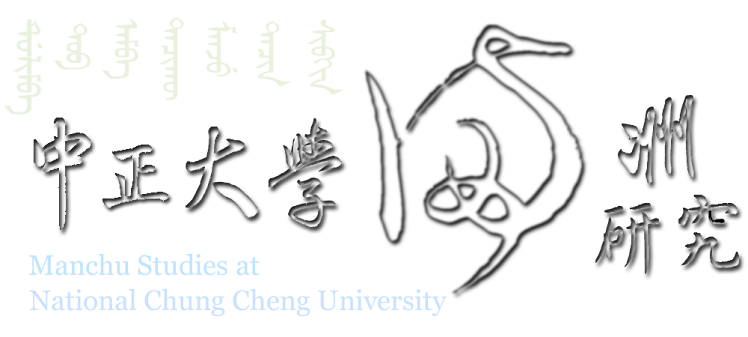Saksaha: A Journal of Manchu Studies
Volume 12 (2014)
IntroductionStephen Wadley
Editors’ Introduction
Benjamin Levey and Matthew W. Mosca
Shier zitou jizhu (Collected notes on the twelve heads): A Recently Discovered Work by Shen Qiliang
Mårten Söderblom Saarela
The present paper will introduce a thus far unknown major work by Shen Qiliang 沈啟亮 (fl. 1645—1693), Shier zitou jizhu 十二字頭集註 (Collected notes on the twelve heads; 1686), that I recently had the opportunity to read in its only known copy at the library of the National Museum of China (Guojia Bowuguan 國家博物館). The book's existence has previously been noted in catalogs, but inspection of the book itself reveals that it is much more than the published references to it suggest. Although retaining the structure of a syllabary, the book can equally be described as an elementary Manchu textbook for speakers and readers of Chinese, focusing on the pronunciation and writing of Manchu characters. The paper will give a detailed introduction of the book, including the available bibliographical information; a translation of the preface and the statement of editorial principles; and a description of the contents. Next, I will relate Shier zitou jizhu to other books. I will argue that the discovery of this work suggests that a work previously attributed to Shen might very well have been published without his involvement, with the implication that Shen might have died earlier than previously thought. I will also show how the influence of Shier zitou jizhu, despite only surviving in one known copy, can still be traced in Manchu syllabaries into the nineteenth century.
The Qing Dynasty and Its Central Asian Neighbors
Takahiro Onuma
Through a series of military campaigns in the middle of the eighteenth century, the Qing dynasty encountered various groups in Central Asia. This essay discusses some issues related to Qing policy toward Central Asia. The Qing evaluated its conquest of the “New Dominion” (Xinjiang) as a great achievement and conceptualized an ideal imperial vision of Central Asian people. With respect to Qing communication with Central Asia, one of the remarkable facets of their negotiations was the use of non-Chinese languages, e.g. Manchu, Mongolian, Turki (Chaghatay), and Persian and Qing government established systems of translation. To say nothing of their content, the very existence or possession of Qing imperial edicts had great significance for local leaders of Central Asia. On the other hand, according to the circumstances, alterations and interpretations convenient to the Qing were often added to the statements from Central Asia. In addition, this essay conducts basic research on how the people of the Qing and Central Asia viewed each other. The arguments can provide some new perspective for reconsidering the relationship between the Qing dynasty and its Central Asian neighbors.
Imperial Legacies and Revolutionary Legends: The Sibe Cavalry Company, the Eastern Turkestan Republic, and Historical Memories in Xinjiang
Max Oidtmann
This essay examines the process of writing and memorializing the past in the post-Mao era in Xinjiang. In particular, this essay concerns the Sibe community and their recollections of the turbulent decades between 1930 and 1949 and their participation in the Eastern Turkestan Republic. Writing in Chinese, Manchu, and Uyghur, Sibe authors have recorded a narrative of the revolutionary period that is significantly different from the “official” narrative of the PRC. They have appropriated the vocabulary of revolution, translated it into Manchu, and used it to talk about their own revolutionary activities in 1944, asserting both their own agency and their ambivalence about their role as an official “minority nationality” in “New China.” Moreover, Sibe participation in the ETR reveals the degree to which their martial legacy as Qing bannerpeople continued to complicate self-understandings and political activities well into the 1940s.

沒有留言:
張貼留言